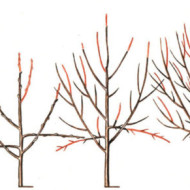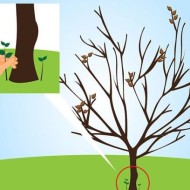Secrets and rules of successful cultivation of winter-hardy cherries of the Revna variety
Content
Origin story
The whimsical beauty of the sweet cherry was only recently grown only in the southern regions. However, breeding work does not stand still, and today varieties have been bred that can be successfully grown in central Russia. Jealousy is rightfully considered one of the greatest selection successes in the field of cherries. Scientists from the Bryansk Research Institute of Lupin MV Kanshina and AI Astakhov worked on the hatching.
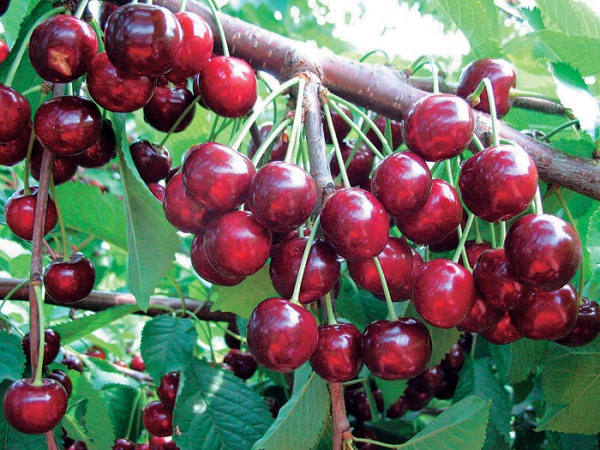
The basis was the seedling of Bryanskaya Rosova, the method of free pollination of which was able to obtain Revna. The plant inherited such remarkable qualities as cold resistance, high yield, excellent commercial and taste characteristics of fruits and resistance to fungal infections.
The variety test of Revna took place in 1993, and a year later the culture was included in the State Register of Plants for the Central Region of Russia.
Botanical portrait of culture
Not everyone will be able to tell the difference between sweet cherry and its closest relative, cherry. Each culture has its own characteristics, but the main difference is the fruits.
The appearance of the tree
Revna is a medium-sized tree with a height of about 4 m and a strong pyramidal crown. Shoots grow quickly, but the crown remains medium thickened. The branches are straight, moderately thick, strongly deviated from the trunk. Age branches are gray, young shoots are rich brown. The kidneys are large, ovoid or round in shape.
The leaves are large, rounded at the base and pointed towards the end, serrated edges. The structure of the leaf is leathery, the color is bright green. Petioles are short with several large glands. The inflorescences are small, bowl-shaped, and consist of four small white flowers. More than 80% of fruits are formed on bouquet shoots.

Description of fruits
The fruits are round in shape, but slightly flattened. The berries have an average size - about 5 g. But there may be large specimens reaching 7 g. The skin is dense, glossy, dark scarlet, almost black. There is a small white spot at the base of the apex. The stone is oval in shape, well separated from the pulp. The pulp is dense, deep red in color.
Video "Description of cherries Revna"
This video presents the main characteristics of a fruit and berry crop.
Variety characteristics
Not all varieties of cherries have qualities that will allow them to be grown in regions with unfavorable climatic conditions.
Drought resistance and winter hardiness
Jealous is resistant to sunburn and tolerates dry weather well. However, prolonged drought can negatively affect the quantity and quality of the crop. Cherries and spring frosts are not terrible, since the tree blooms rather late. But early autumn frosts, which began before the end of the period of active sap flow, can destroy the tree.
When properly prepared for wintering, the tree can withstand frost down to -27 ° C.
Pollination and ripening dates
For successful mutual pollination of cherries, only other varieties of this species are suitable. Cherries are not the best option. Without pollinators, Revna will not bear fruit normally, so you should take care of suitable trees in advance. The varieties Raditsa, Tyutchevka, Iput, Gronkovaya, Yantarnaya are perfect.
The sweet cherry enters the active growing season in the second decade of May. From the beginning of flowering to the ripening of the fruit, it takes about two months.
Fruiting and productivity
The tree begins to bear fruit in the 5th year after planting. In the presence of good pollinators, it bears fruit consistently and annually. About 20 kg of berries can be harvested from one tree, with optimal weather conditions and proper care it can grow up to 35 kg.
Transportability and storage
Since cherries are considered late, the ripening dates for the berries are already in July. The dense skin and structure of the pulp allow the berries to be stored for up to a week in special fruit refrigeration chambers. Undamaged berries can be stored longer.
The berry is easily separated from the stalk and therefore is not damaged during picking. The degree of transportability is quite high. But it is recommended to transport the berries in special boxes of 5 kg.
Scope of berries
The excellent sweet taste and dense structure of Revna berries make it possible to use them fresh and for making preserves. The high percentage of sugars allows you to prepare not only delicious juice and confiture, but also homemade wine.
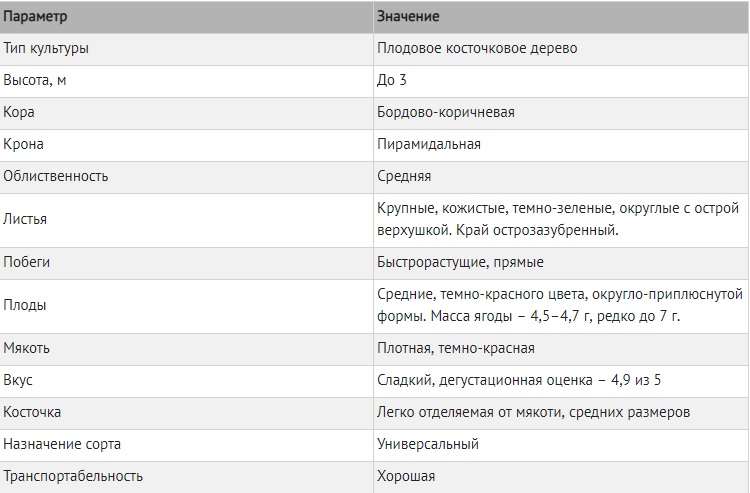
Advantages and disadvantages
Like other stone fruit crops, Revna has its pros and cons.
- high degree of drought resistance and resistance to sunburn;
- cold resistance;
- high yield;
- excellent marketability and taste of fruits;
- resistance to spring frosts.
- late fruiting;
- instability to early autumn frosts;
- the need for pollinators.

Features of planting and care
It is impossible to grow a full-fledged tree, neglecting the planting rules. Therefore, it is imperative to follow all planting recommendations.
Recommended timing of planting seedlings
The optimal period of time for planting cherries is mid-spring. In the southern regions, this may be earlier. The main thing is that the soil should thaw and warm up, but the buds should not begin to swell. In order not to stress the tree, it must be in a dormant state.
If the roots of the seedling are covered with an earthen clod, then the plant can be transplanted before the onset of heat.
Choosing a place, soil and planting material
First of all, you need to take care of a well-lit place. Slightly damp soils are not a hindrance, but swampy areas and superficially flowing groundwater (less than 2 m) are not the best option for Revna. A great option is the south side or slope.
The place should be located at a distance from outbuildings and be protected from drafts and gusts of strong winds.
Light fertile soils with a neutral level of acidity, loams and sandy loam soils are great for cherries. But clayey areas will not allow the tree to develop normally.
Before planting, it is imperative to inspect the seedling. You can choose a one-year-old and an older tree (2-3 years). The roots should be healthy, strong, free from damage and dry areas. Also, the place of vaccination must be noticeable below. Otherwise, you run the risk of raising a wild game.
Landing algorithm
Sweet cherries are planted at intervals of 3 m. A hole is prepared in the fall. The diameter of the pit should be approximately 1 m, the depth - from 70 cm. The soil is taken out of the pit, mixed with humus and superphosphate and used as fertile soil for backfill. The seedling is placed on a part of fertile soil and covered with soil, lightly compacted. The root collar should be above ground level. Then a support is installed, the near-trunk zone is watered and mulched with peat or sawdust.
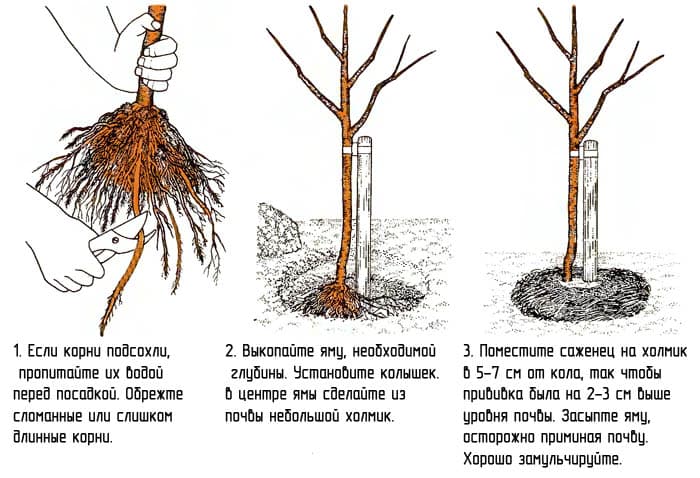
Top dressing and watering
With a sufficient amount of natural precipitation, it is not necessary to water the tree additionally. During dry periods, cherries are watered abundantly once a week.
Several years after planting, feeding Revne is not required. In the 4th year, organic matter is introduced, usually in autumn, when digging. Mineral fertilizers are applied several times: before flowering, after its end and after another two weeks.
Crown formation
The rapid growth of shoots makes it possible to form almost any type of crown in a few years: sparse-tiered, bushy and flattened. You can also leave the natural, wide-pyramidal. But sanitary pruning should be done in any case. It is also recommended to remove the incorrectly growing branches.
- Sparse tiered pruning
- Autumn pruning
- Crown rejuvenation
Preparing for winter
You do not need to cover cherries for the winter. It is only necessary to whitewash the crown and skeletal branches to prevent the formation of frost cracks and sunburn. Shelter with spruce branches will also be useful, so that small rodents and hares do not damage the bark.
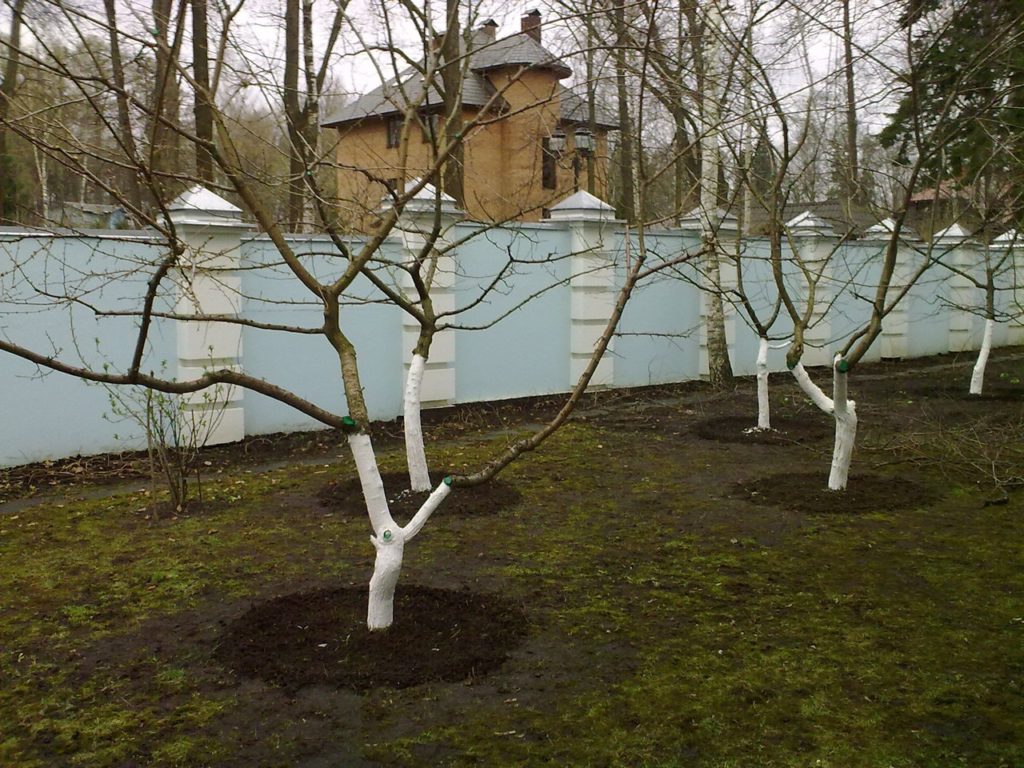
Common diseases and pests of the variety
Jealousy has good immunity to various stone fruit diseases. However, due to inaccuracies in care, mosaic and clotterosporia may appear.
Among the pests of sweet cherry, the most common threat is the fruit moth, cherry aphid and fly.
Reviews of summer residents
“Cherries are my favorites. But the climatic conditions of the Moscow region make it possible to grow far from every variety. The grandson gave a sapling to Revna. All were satisfied ”.
“The dacha was bought recently. There were many cherry trees in the garden. Revna is one of the most fertile and unpretentious varieties. The berries make a very tasty homemade liqueur ”.
If the climatic features of your region cannot be called optimal for growing capricious crops, do not despair. Adaptation to weather conditions, endurance and resistance to fungal infections in combination with the wonderful fruits of Revna will meet all your expectations.

